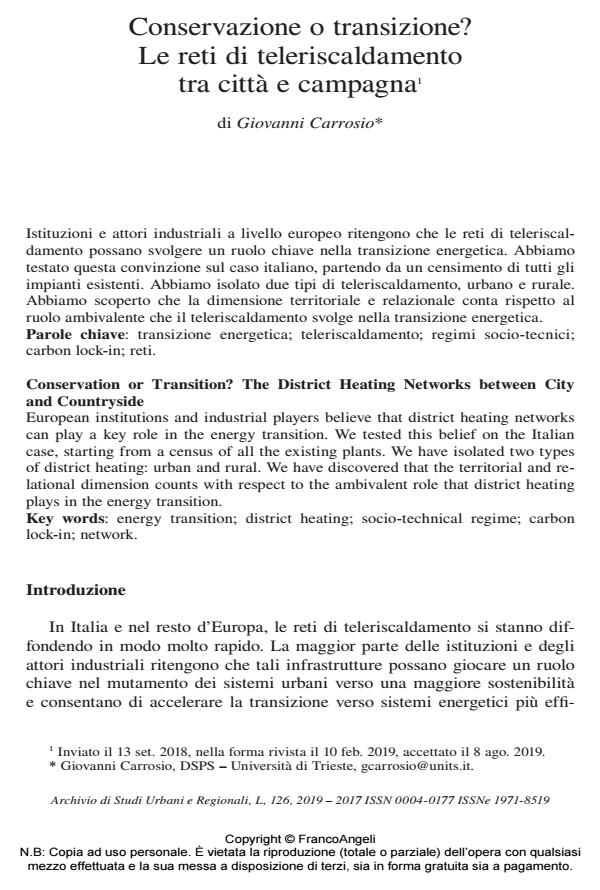Conservation or Transition? The District Heating Networks between City and Countryside
Journal title ARCHIVIO DI STUDI URBANI E REGIONALI
Author/s Giovanni Carrosio
Publishing Year 2019 Issue 2019/126
Language Italian Pages 21 P. 32-52 File size 375 KB
DOI 10.3280/ASUR2019-126003
DOI is like a bar code for intellectual property: to have more infomation
click here
Below, you can see the article first page
If you want to buy this article in PDF format, you can do it, following the instructions to buy download credits

FrancoAngeli is member of Publishers International Linking Association, Inc (PILA), a not-for-profit association which run the CrossRef service enabling links to and from online scholarly content.
European institutions and industrial players believe that district heating networks can play a key role in the energy transition. We tested this belief on the Italian case, starting from a census of all the existing plants. We have isolated two types of district heating: urban and rural. We have discovered that the territorial and relational dimension counts with respect to the ambivalent role that district heating plays in the energy transition.
Keywords: Energy transition; district heating; socio-technical regime; carbon lock-in; network.
Giovanni Carrosio, Conservazione o transizione? Le reti di teleriscaldamento tra città e campagna in "ARCHIVIO DI STUDI URBANI E REGIONALI" 126/2019, pp 32-52, DOI: 10.3280/ASUR2019-126003